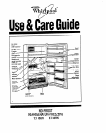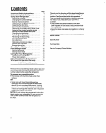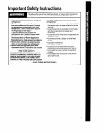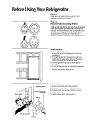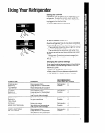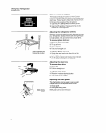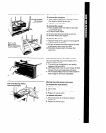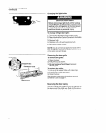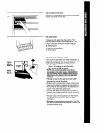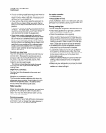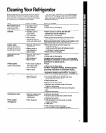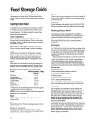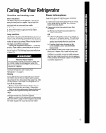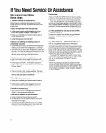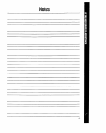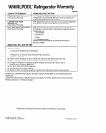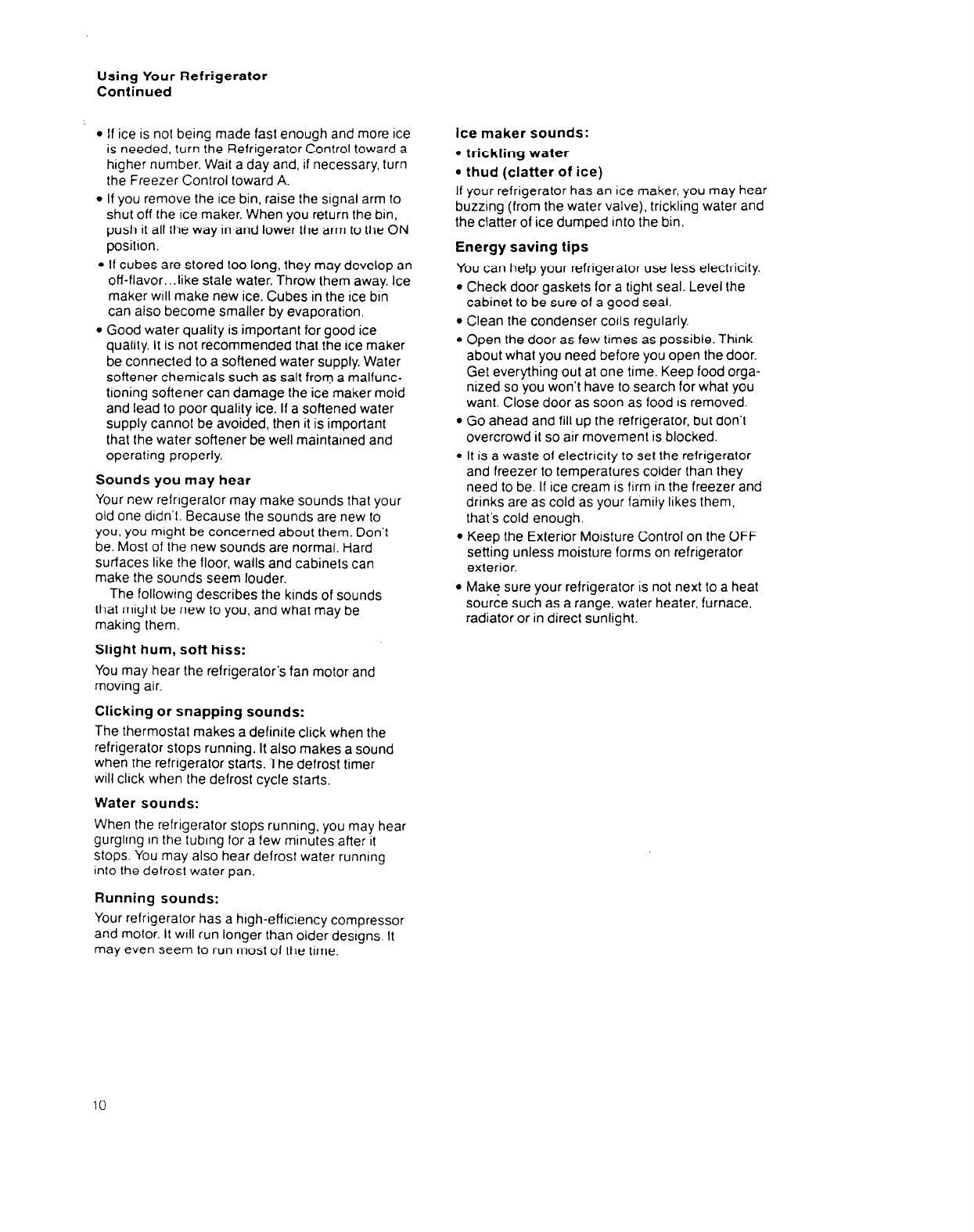
Using Your Refrigerator
Continued
l
If ice is not being made fast enough and more ice
is needed, turn the Refrigerator Control toward a
higher number. Wait a day and, if necessary, turn
the Freezer Control toward A.
l
If you remove the ice bin, raise the signal arm to
shut off the ice maker. When you return the bin,
push it all the way in and lower the arm to the ON
positron.
. If cubes are stored too long, they may develop an
OH-flavor...like stale water. Throw them away. Ice
maker will make new ice. Cubes in the ice bin
can also become smaller by evaporation.
l
Good water quality is important for good ice
qualily. It is not recommended that the ice maker
be connected to a soHened water supply. Water
softener chemicals such as salt from a malfunc-
Ironing softener can damage the ice maker mold
and lead to poor quality ice. If a soHened water
supply cannot be avoided, then it is important
that the water sottener be well maintatned and
operating properly.
Sounds you may hear
Your new refngerator may make sounds that your
old one didn’t. Because Ihe sounds are new to
you, you mrght be concerned about them. Don’t
be. Most of the new sounds are normal. Hard
surfaces like the floor, walls and cabinels can
make the sounds seem louder.
The following describes the krnds of sounds
that might be new to you, and what may be
making them.
Slight hum, soft hiss:
You may hear the refrigerator’s fan motor and
movrng air.
Clicking or snapping sounds:
The thermostat makes a definite click when the
refrigerator stops running. It also makes a sound
when the refngerator starts. The defrost timer
will click when the defrost cycle starts.
Water sounds:
When the refrigerator stops running. you may hear
gurgling In the tubing for a few mrnutes after it
stops. You may also hear defrost water running
into Ihe defrost water pan.
Running sounds:
Your refrigerator has a high-efficiency compressor
and motor. It wrll run longer than older desrgns. It
may even seem to run most of Ihe time.
Ice maker sounds:
l
trickling water
l
thud (clatter of ice)
If your refrigerator has an ice maker, you may hear
buzzing (from the water valve), trickling water and
the clatter of ice dumped into the bin.
Energy saving tips
You can help your refrigerator use less electricity.
l
Check door gaskets for a lighl seal. Level the
cabinet to be sure of a good seal.
l
Clean the condenser coils regularly.
l
Open the door as few times as possible. Think
about what you need before you open the door.
Get everything out at one time. Keep food orga-
nized so you won’t have to search for what you
want. Close door as soon as food IS removed.
l
Go ahead and fill up the refrigerator, but don’t
overcrowd it so air movemenl is blocked.
l
It is a waste of electncily to set the refrigerator
and freezer to temperatures colder than they
need to be. If ice cream IS firm in the freezer and
drinks are as cold as your family likes them,
that’s cold enough.
l
Keep the Exterior Moisture Control on the OFF
setting unless moisture forms on refrigerator
exterior.
l
Make sure your refrigerator is not next to a heat
source such as a range, water heater, furnace,
radiator or in direct sunlight.
10



